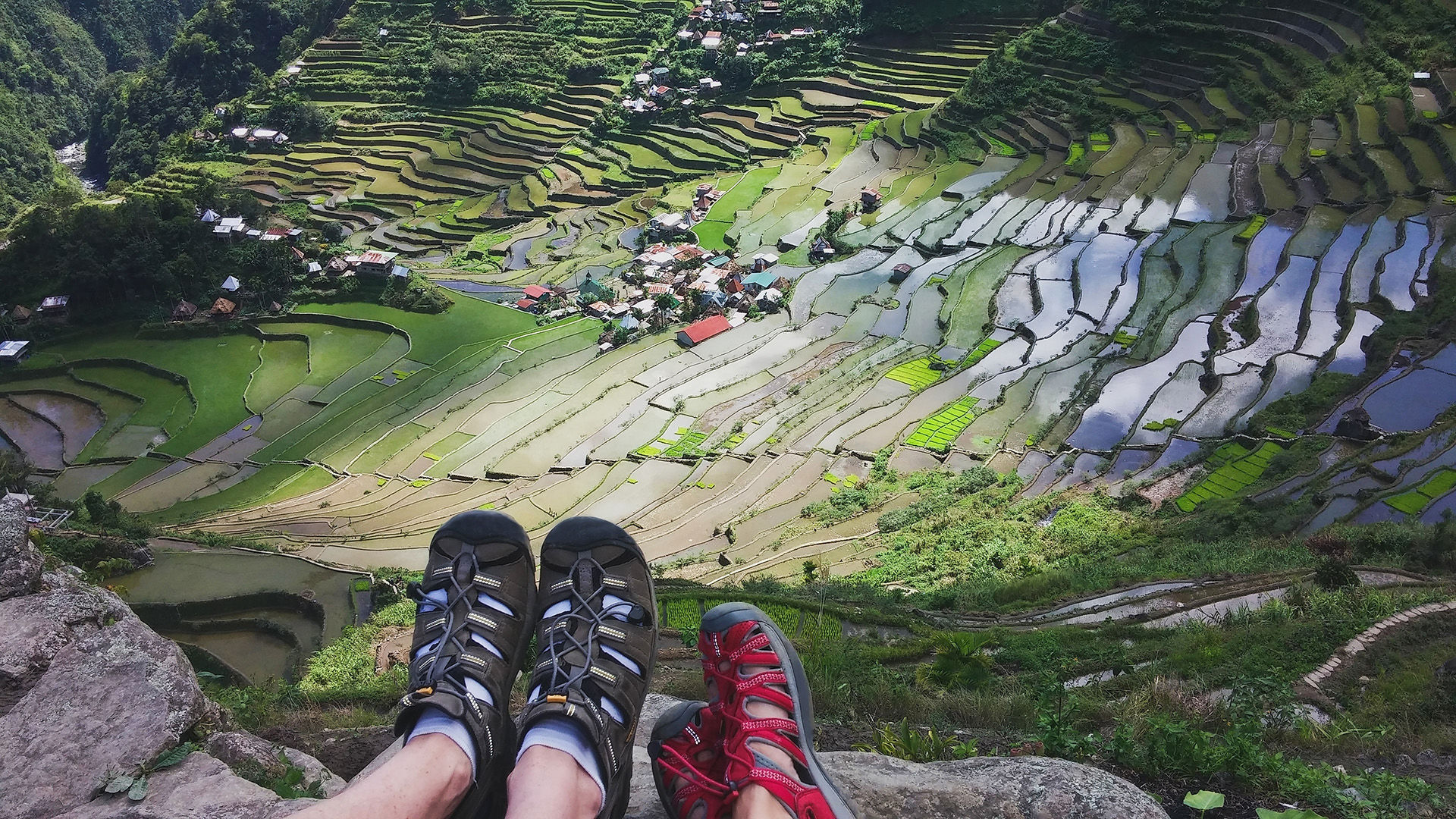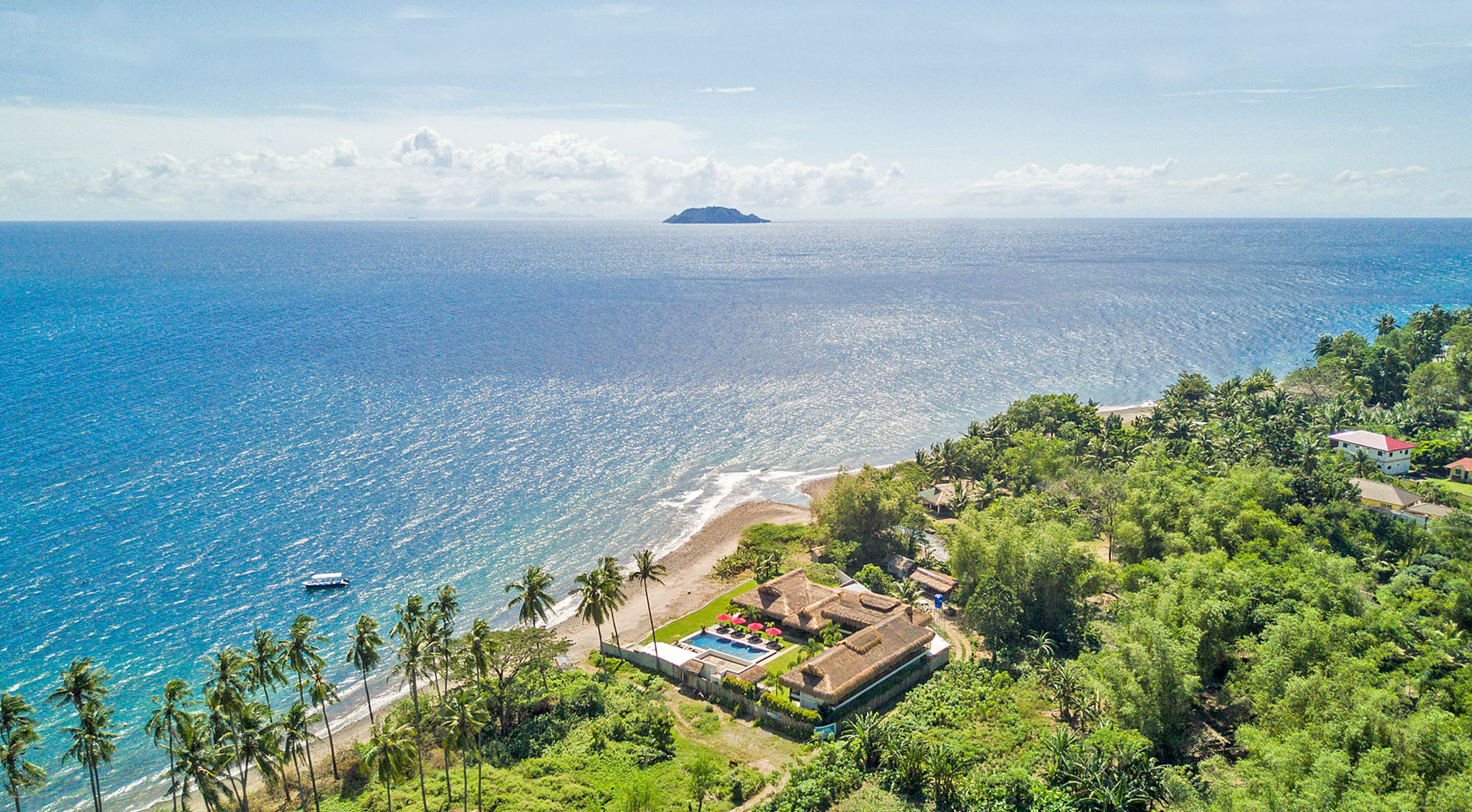
Inland Adventures in a Nation of Islands
The beaches are spectacular and the coral reefs sublime. But to experience the full natural wonder of the Philippines, you need to exchange flip flops and swimsuits for walking shoes and shorts and move inland. Here, far from city lights, footpaths meander through wild landscapes that range from wetlands to mountain heights, giving access to verdant wildlife refuges, remote waterfalls and historic sites. Some routes may require challenging climbs and multi-day commitments, but equally common are the easy walks that can be enjoyed in an afternoon, either as self-guided adventures or in the company of a knowledgeable guide.
Highlights
- Best for: Solos, couples and budget to luxury
- Best season to visit: Year round, with coolest and driest temperatures from Dec through June
- Weather: The Philippines is usually hot and humid. There are three seasons: tag-init or tag-araw, the hot dry season or summer from Mar - May; tag-ulan, the rainy season from June - Nov; and tag-lamig, the cool, dry season from Dec - Feb
Philippines Information
Hiking in the Philippines Overview
Walks in Luzon's Laguna Province take in hot springs, lakes, century-old churches and waterfalls. The Puerto Galera region offers coastal mangrove explorations, valley hikes and mountain treks. The island of Bohol is renowned for the Chocolate Hills, the Bilar Manmade Forest and the haunted caves of Lamanok Island.
Hiking in the Philippines Tips
With the exception of high mountain treks, dressing for a hike in the Philippines is about staying cool or staying dry. Locals recognize three seasons. Tag-init, the hot season, from March to May. Tag-ulan, the rainy season, from June to November; and Tag-lamig, the cool season, from December to February. Cool is a relative term, as temperatures will still be in the 70s.
Best Places to Hike in the Philippines
The footpaths of Lamanok Island lead to sacred burial caves and shrines where traditional shamans invoke ancient spirits.The route to Pagsanjan Falls includes a descent on a network of ladders and stairs. A walk along the Tukuran River passes rice fields, forests and river rapids to arrive at a calm swimming hole. Paths in the municipality of Balilihan lead to waterfalls and prime birding sites.
What to Pack for Hiking in the Philippines
Passing showers are possible any time of the year, and almost inevitable in the rainy season, so a light-weight waterproof jacket is a good addition to the day pack. For wet-season walks and hikes along rivers, hiking sandals may actually be a better choice than conventional footwear.
Resorts

Philippines
Magic Oceans Dive Resort
See Packages & Learn More

Philippines
Azure Dive Resort
See Packages & Learn More
Passport and/or Visa Requirements
Entry Requirements: All U.S. citizens are required to have a valid passport. Your passport must contain at least one blank page for entry stamp and proof of onward or return airline ticket may be required. Visas upon arrival are issued for 30 days for tourist stays.
Exit Requirements: All persons leaving the Philippines pay a Government Departure Tax of approximately USD $17.
Immunizations
There are no required vaccines for entry into the Philippines, although you should always check with your doctor and the Centers for Disease Control on recommended vaccinations for travel at cdc.gov.
Culture and Customs
The Philippines are a blend of East and West. Centuries of Spanish and US influences mix with Asian cultural traditions and cuisines. Sophisticated urban centers such as Manila contrast with village life in small fishing communities and mountain settlements. Music is a common love that unites Philippine people of all ethnicities and cultural backgrounds, whether the performance takes the form of a spirited karaoke rendition of a pop favorite or a traditional rondalla. It is a culture where people are quick to sing, laugh easily, and place high values on family, friendships and hospitality. Clear waters and spectacular beaches attract vacationers to coastal resorts, while adventure-minded travelers have a wide range of activities to choose from. Nature lovers can trek, bike or bird in one of the world's most diverse biospheres, home to nearly 80 percent of the world’s plant and animal species. Though better known for its beaches, the Philippines is also a land of towering mountains, with peaks rising to heights of more than 9,000 feet. In addition to trekking and climbing, the highlands provide thrilling whitewater rafting and paddles through underground rivers. Indigenous wellness traditions live on in healing arts such as Hilot touch therapy and Dagdagay foot massage and in the traditional greeting of “Mabuhay,” which is a wish for good health, peace, and harmony.
Electricity, Phone and Internet Access
Electricity in the Philippines is 220 volts, 60 Hz, so an adapter will be needed for U.S. visitors. If your electronic device does not accept 220 V input, you may also need a step down transformer.
The country code for the Philippines is 63. Check with your cell phone provider for International plans which may include text, data and voice. Many hotels offer WiFi.
Water Quality
The water is safe to drink at the larger chain hotel and in major cities, which offer purified water, but it is recommended to drink bottled water while in the Philippines.
Language & Currency
The Philippines is the 3rd largest English-speaking country in the world. Tagalog (Filipino) is spoken by nearly 1/3 of the population as a first language and as a second language by the other 2/3 of the population. Filipino is the official language of education, but English is also an official language. The local currency is the Philippine Peso (PHP) but U.S. dollars are accepted in most places. Check the currency rate here.
Time
The Philippines observe Philippines Time or PHT which is 8 hours ahead of Greenwich Mean Time (+8 GMT). The Philippines does not observe daylight savings time.
Location, Size and Population
The Philippines are located in Southeast Asia, in the Western Pacific Ocean, east of Vietnam and northeast of Malaysia. The Philippines are made up of 7,107 islands. The three main islands are Luzon in the north, the Visayas in the Central Region and Mindanao in the South. The capital city of the Philippines is Manila. The islands take up approximately 115,830 square miles. The islands vary in size with Luzon being the largest at 42,458 square miles, it is also the 15th largest island in the world and the 4th most populated island in the world, to some of the smaller places like popular Dumaguete, which is only around 13 square miles and located in the Visayas.
The population of the Philippines is over 102 Million (2016).